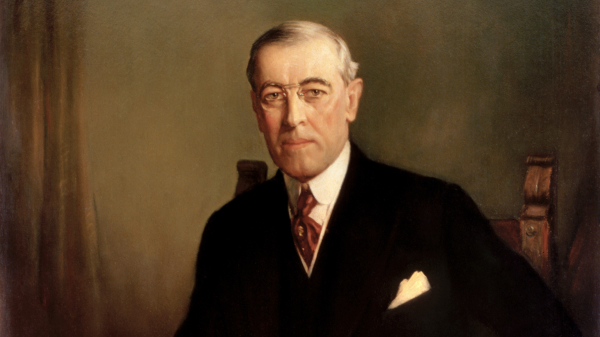Europe keeps referring to the “trans-Atlantic” union to have its way with the United States of America. The idea of a strong trans-Atlantic union between Europe and the United States, rooted in post-World War II alliances, is losing significance in 2025, particularly under Donald Trump’s leadership. Unlike in 1945, when Europe relied heavily on American military, economic, and political support, today’s Europe is more independent, assertive, and sometimes at odds with U.S. policies. Shifts in defense, trade, energy, and global diplomacy have led Europe to prioritize its interests rather than blindly following U.S. leadership. The Trump era’s emphasis on “America First” policies has further widened the gap, making the old vision of transatlantic unity increasingly outdated.
Here are a few reasons Europe is different from the continent that it was in 1945, as it relates to the United States of America.
Economic Competition, Not Just Partnership
The historical economic partnership between Europe and the United States has evolved into a more competitive dynamic, as Europe strengthens its trade and investment ties with China. While the U.S. once dominated Europe’s economic landscape through post-war reconstruction efforts and financial institutions like the IMF and World Bank, the balance has shifted. Europe is now actively pursuing policies that reduce its dependence on American markets, technology, and financial systems, particularly in response to the Trump administration’s protectionist stance.
China has emerged as a crucial economic partner for Europe, offering alternatives in trade, technology, and infrastructure investment. The EU has deepened relations with Beijing through trade agreements, green energy collaborations, and digital market access. Europe’s auto, pharmaceutical, and luxury goods industries rely increasingly on Chinese consumers, while Chinese investment in European infrastructure, including ports and high-speed rail, continues to grow. Despite tensions over human rights and security concerns, economic pragmatism is driving the EU to engage with China rather than side fully with U.S. containment strategies.
As the U.S. imposes tariffs and sanctions to counter China, Europe finds itself navigating a middle path—balancing transatlantic ties while ensuring economic sovereignty through stronger trade partnerships with Beijing. The US, through diplomacy during the Clinton years, rightly or wrongly, introduced the PRC to the world. Europe has since than piggy-backed on this dynamic, to the extent that today it relies almost exclusively on China as its manufacturing base. Though attempts have been made since the first Trump administration to reduce this reliance, it’s not easy to just make about turns. Simply, there is no educated talent, engineering, and expertise left in Europe to make this about-face in a hurry, except of course Germany.
Diverging Political Values
Europe and the United States are increasingly divided in their political values, with Europe embracing mass immigration and multiculturalism at the expense of national identity and stability. Decades of open-border policies have led to social fragmentation, rising crime, and cultural tensions as European leaders prioritize refugee intake over the well-being of their own citizens. Countries like Germany, France, and Sweden have struggled to integrate millions of migrants from the Middle East and Africa, resulting in parallel societies, declining public safety, and a strain on social services. Instead of addressing these failures, European elites continue pushing policies that dilute national traditions and weaken social cohesion.
Meanwhile, Europe’s so-called democracy is becoming less representative as unelected bureaucrats in Brussels dictate policies without direct input from the people. The European Union overrides national sovereignty, forcing member states to comply with immigration quotas, environmental regulations, and economic mandates that do not reflect the will of their citizens. In contrast, Trump’s America First movement champions national sovereignty, secure borders, and policies that put American citizens first. While Europe continues down a path of self-inflicted instability, the U.S. has the opportunity to stand as a model of strong borders, national pride, and truly representative democracy.
Europe’s Energy Crisis
Europe’s push for energy independence from the U.S. has backfired, leaving the continent vulnerable to supply shortages, skyrocketing prices, and a deepening reliance on unstable or adversarial regimes. In recent years, European nations have sought to distance themselves from American energy exports, favoring green energy initiatives and diversifying their suppliers to include Russia and the Middle East. However, this strategy has proven disastrous in the wake of the Ukraine conflict, which has upended energy markets and left Europe scrambling for alternatives.
Before the war, many European countries, particularly Germany, heavily depended on Russian natural gas, assuming that economic ties would ensure stability. But when the conflict escalated, sanctions on Russia led to supply disruptions, forcing Europe into an energy crisis every winter. Households and businesses have faced soaring heating costs, energy rationing, and industrial slowdowns, exposing the failures of their overreliance on unreliable foreign sources. The Middle East, another major energy supplier, remains a volatile region where geopolitical tensions threaten consistent supply.
Meanwhile, Europe’s aggressive push for green energy has fallen short, with renewable sources unable to meet demand. Wind and solar power, while expanding, remain inconsistent, and efforts to phase out nuclear and coal have only exacerbated shortages. While the U.S. remains energy dominant through domestic oil, gas, and shale production, Europe’s misguided policies have left it vulnerable, proving that abandoning reliable energy sources in favor of political agendas carries severe consequences.
Conclusion: Europe’s Shifting Reality
Europe’s changing relationship with the United States reflects a continent that is no longer the strong, stable ally it once was. From economic competition and energy dependence to political instability and uncontrolled immigration, Europe is struggling under the weight of its own policies. The transatlantic alliance is weakening, and the consequences are clear—rising costs, social unrest, and a lack of true democratic representation. As the world moves further into 2025, these issues will only grow more pressing. I will continue to explore these topics in future writings, providing deeper analysis on Europe’s trajectory and what it means for America.




